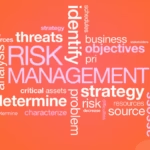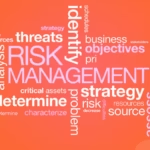
In the fast-paced hospitality and retail world, managing vendor relationships can feel like trying to keep a dozen plates spinning simultaneously! Did you know that nearly 60% of data breaches stem from third-party vendors? That staggering statistic underscores the importance of a solid vendor risk management program! As someone who has navigated the complexities of vendor management for years, I’m excited to share insights that can help you build a comprehensive strategy. This guide will cover everything you need to know to protect your business from potential threats while maximizing the benefits of your vendor partnerships. So, let’s roll up our sleeves and dive into the essential components of a robust vendor risk management program!
Understanding Your Vendor Landscape
The first step in bulletproofing your business is to map out your entire vendor ecosystem. This means identifying all third-party relationships, from coffee suppliers to technology partners and service providers. Each vendor comes with its own set of risks, so it’s crucial to categorize them based on their level of access to sensitive data and the potential impact on your operations.
Think of it like this: not all vendors are created equal. Some may handle sensitive customer information, while others might manage logistics. Keeping an up-to-date inventory of all vendors will allow you to stay on top of who you’re working with and the risks they may bring. Regular reviews of this inventory will ensure that you can quickly adapt to any changes in your vendor landscape.
Establishing a Thorough Vendor Onboarding Process
Once you’ve mapped out your vendor landscape, it’s time to focus on onboarding new vendors. Implementing a rigorous vetting process is crucial. This means evaluating potential vendors’ security measures, compliance with relevant regulations, and overall financial stability.
Don’t shy away from negotiating ironclad contracts that clearly outline security and performance expectations. A well-crafted contract is your first line of defense against potential issues down the road. Make sure to include specific clauses related to data security, compliance, and even exit strategies in case the relationship doesn’t work out.
Continuous Vendor Monitoring and Assessment
After onboarding, the work doesn’t stop there! Continuous monitoring is key to managing vendor risk effectively. You need to conduct routine assessments of vendor performance and risk posture regularly. This is where technology can become your best friend.
Utilize automated monitoring tools to keep an eye on vendor status and receive alerts for potential risks or changes. Establish clear escalation protocols so that when issues arise, everyone knows their role. Having a plan in place will guide your actions when things go awry—because, let’s face it, they sometimes do!
Fostering a Culture of Vendor Accountability
A successful vendor risk management program doesn’t just stop at contracts and assessments; it’s also about fostering a culture of accountability. Encourage open communication and collaboration with your vendor partners. Regular check-ins can help build trust and ensure that everyone is on the same page.
Consider implementing vendor relationship management training for your staff. This will empower them to handle vendor relationships more effectively and understand the importance of accountability. Clearly defining roles and expectations for all parties involved in vendor management will help create a sense of ownership and responsibility.
Creating an Incident Response Plan
When it comes to vendor-related incidents, having a solid incident response plan is essential. Develop comprehensive procedures that outline what to do in case of a data breach or disruption involving your vendors.
Tabletop exercises can be beneficial—these simulate real-world scenarios and help your team practice their response. Additionally, maintain an updated list of critical vendors and backup options to ensure business continuity during crises. Being prepared can make all the difference when the unexpected happens.
Leveraging Technology for Enhanced Risk Management
Technology can be your best ally in vendor risk management in today’s digital age. Consider adopting AI-powered tools that analyze vendor risk and monitor their performance. These tools can help you stay ahead of the game and identify potential issues before they escalate.
You might also explore blockchain technology for secure, transparent supply chain management. This can provide real-time visibility into your vendors’ practices, ensuring that they align with your security standards. Implementing automated risk scoring and assessment workflows can also save time and streamline your processes.
Conclusion
Creating a robust vendor risk management program for hotels and retailers is no small feat, but it is essential today. By understanding your vendor ecosystem, establishing thorough onboarding processes, continuously monitoring vendors, and fostering accountability, you can effectively safeguard your business from potential risks. Embrace innovative technologies to enhance your program further and ensure you’re always one step ahead!
Now is the time to take control of your vendor relationships, turning them into valuable assets that contribute to your success. So, let’s start building a bulletproof vendor risk management program—your future self will be grateful! Remember, your vendors are an extension of your business; treat them well, and they will help you thrive.
By following these guidelines, you will protect your business and create a more resilient and efficient vendor ecosystem. Happy managing!
The post Creating a Robust Vendor Risk Management Program for Hotels and Retailers appeared first on .

